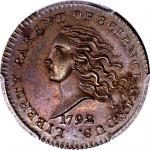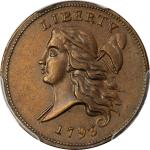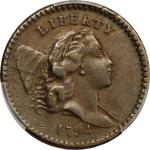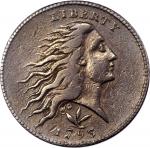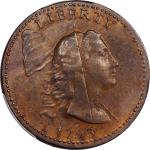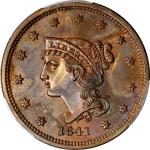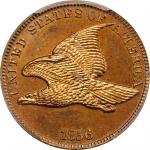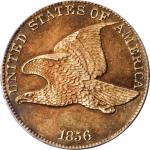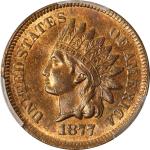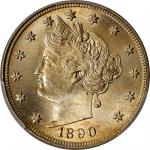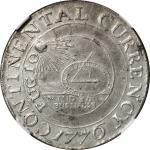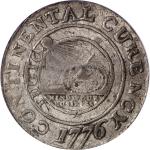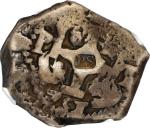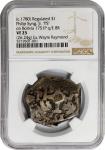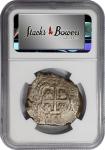(ca. 1777) Philip Syng, Jr. Regulated Bolivian 1751-P q/E 8 Reales ($1). Potosi Mint, Assayer Esteban Gutierrez Escalante (E). 404.95 grains. Plugged, Clipped, Countermarked PS. VF-25 (NGC). 26.24 grams, 404.95 grains. Colonial Williamsburg Foundation Collection-Accession number 2004-8,43; cf. Paoletti-419; cf. Cal-517; cf. KM-40. Countermark at center of the cross on the reverse over an expertly executed plug, about 4 mm wide on the opposing obverse. Upon close inspection there appears to be a slight straight planchet clip to the right at about 6 oclock below the cross, which more than likely accounts for the minor weight variance of the 1777 Philadelphia prescribed weight standard of 17 dwt 6 grains (414 grains, 26.83 grams) for a Spanish silver dollar, published in the <em>Evening Post</em>, November 6, 1777. The uneven surfaces are relatively smooth with natural fissures near the edges. The rich slate patination amongst the devices transitions to a lovely graphite coloration in the open fields and outer design features, with areas of dove gray on the highest points. Hints of iridescent hues pop out when tilted in the light complementing the crude design features. The old envelope patina adds to its pleasing appearance, offering much originality with good eye appeal. This fantastic and historic numismatic relic is certain to be a centerpiece, adding depth and breadth, for the advanced and discerning collector.<p>A prolific Philadelphia silversmith, Philip Syng, Jr. is perhaps best known for the ink stand that he made for Pennsylvanias Provincial Assembly, the same one used during the signing of the Declaration of Independence in 1776. Syng was recognized for his talents as a gold and silver smith producing a wide array of items such as silver bowls, tankards, teapots and trays, gold belt buckles, buttons and teaspoons that could all be found in his shop. The hallmark on the present example can be matched to numerous wares housed in major institutions such as New York Citys Metropolitan Museum of Art, which contains a silver ladle (Accession Number 33.120.257) as well as other items. He was very active in his community and became close friends with Benjamin Franklin who considered him a "Worthy and ingenious friend." This friendship led to his eventual invitation to join the group of political and intellectual civic leaders the Junto, founded by Franklin in 1727. Among his numerous accomplishments, Syng was a founder and officer of quite a few cultural institutions in Philadelphia, including the Union Fire Company, Pennsylvania Hospital and the American Philosophical Society, as well as serving as the city assessor, warden of the port, and treasurer of the city and county of Philadelphia, among many other posts. Leading up to the Revolutionary War, Syng retired from his public duties in 1773, but remained an active member of society. At some point during the British occupation of Philadelphia, September 1777 to June 1778, Syng left the city for his farm in what is now Ardmore, some 10 miles west of the city, where he lived until his death in 1789.<p>Also included in this lot is a full weight (26.86 grams), unadulterated Bolivian cob 8 Reales of the same date and mint, 1751, as the Syng regulated dollar. It is certified AU-53 by NGC, and is being offered here for a before and after comparison. Clearly this form of specie is rather crude and irregular from the manufacturing process. Each planchet was cut from the end of a poured silver strap, weighed and adjusted as needed. Incidentally this process would create two different corresponding edges, two beveled edges from the original strap and two areas of straight shear marks from adjustments. It is important to note that a certain amount of variance in weight was acceptable, usually within a couple of percent, as long as the purity was at par. Coin production at the Potosi mint was astronomical, with the Cerro Rico de Potosi supplying roughly 80% of the worlds silver between the 16th and 18th centuries. Upon examination of more than fifty 8 Reales dated 1740 to 1753 from the Cerro Rico hoard it was discovered that many of the coins varied greatly in weight. Unexpectedly, the weight variance was far greater than anticipated, ranging from just under the standard weight at 26.9 grams to a whopping 28 grams on several pieces. Shockingly the average weight, 27.34 grams, is well above the prescribed weight standard of 27.07 grams.<p>Furthermore, when referring to the important works on the cut and countermarked issues of the West Indies of the late 18th and early 19th centuries by Major Fred Pridmore and Ralph Gordon it is noticed that several of the British possessions, namely those of Martinique, Grenada and St. Vincent though some years later and of lighter weight standards to that of the post-Revolution United States, allowed for a tolerance in weight difference. In the instance of Grenada, Authorized 31 August 1798, called for plugged and stamped Johannes (Joes or 6400 reis) originally weighing 144 grains to be restored to the 180 to 204 grains standard (11.66 grams to 13.22 grams). This is a highly unusual occurrence since the tolerance in weight difference is so significant.<p>Though few coins are known bearing Syngs iconic PS hallmark, more are known on gold than silver, circulation and theft having prevented an accurate dating to nearly all. Perhaps the most important example we are aware of, permanently impounded in The Colonial Williamsburg Foundation collection, is a 1763 Bolivian cob 8 Reales that was gifted by the Joseph Lasser Family in 2004 (Accession number 2004-8,43). The weight, an astonishing 413 grains (26.76 grams), is one grain shy of the October 1777 Philadelphia weight standard. This not only sheds light on these incredible issues, but also helps to present a more accurate time period in which Syng was active. Since the weight of the Colonial Williamsburg example corresponds to the October 1777 standard and Syng left Philadelphia at some point during the British occupation that lasted until June the following year, logic would dictate that the period of manufacture was no more than eight months (November 1777-June 1778). The dating to this period would undoubtedly make this the first regulated and hallmarked dollar after the declaration of independence of the United States.<p>(Total: 2 coins) From NASCAs sale of the Wayte Raymond Collection, December 1977, lot 654.

